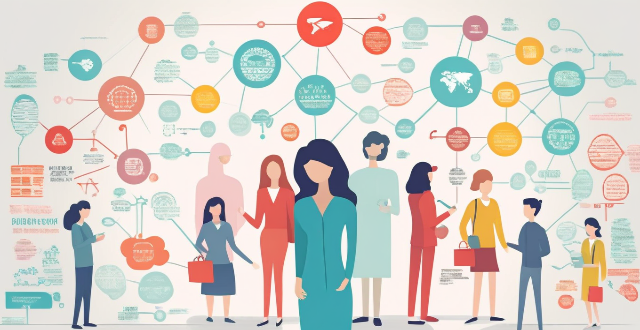To ensure that climate change adaptation and mitigation strategies are gender-sensitive, it is important to recognize the gendered impacts of climate change, involve women in decision-making processes, address gender inequalities in access to resources, promote gender-sensitive research and data collection, and provide gender-sensitive education and training. By taking these steps, we can ensure that climate change adaptation and mitigation strategies are designed and implemented in a way that takes into account the different needs and priorities of women and men.

How can we ensure that climate change adaptation and mitigation strategies are gender-sensitive?
Introduction
Climate change is a global issue that affects everyone, regardless of gender. However, women are often disproportionately affected by the impacts of climate change due to their roles in society and the economy. Therefore, it is essential to ensure that climate change adaptation and mitigation strategies are gender-sensitive. This means taking into account the different needs and priorities of women and men when designing and implementing these strategies. In this article, we will discuss some ways to ensure that climate change adaptation and mitigation strategies are gender-sensitive.
Key Points
1. Recognize the Gendered Impacts of Climate Change
The first step in ensuring that climate change adaptation and mitigation strategies are gender-sensitive is to recognize the gendered impacts of climate change. Women are often more vulnerable to climate change impacts due to their roles in society and the economy. For example, women are often responsible for collecting water and firewood, which can be affected by droughts and deforestation. Women also tend to work in sectors that are more vulnerable to climate change, such as agriculture and fishing. Therefore, it is essential to understand the different ways that climate change affects women and men and to take these differences into account when designing and implementing adaptation and mitigation strategies.
2. Involve Women in Decision-Making Processes
Another key step in ensuring that climate change adaptation and mitigation strategies are gender-sensitive is to involve women in decision-making processes. Women should be included in all stages of the planning, implementation, and monitoring of adaptation and mitigation projects. This includes involving women in setting priorities, defining project objectives, and identifying indicators of success. By involving women in decision-making processes, we can ensure that their needs and priorities are taken into account and that they have a voice in shaping the future of their communities.
3. Address Gender Inequalities in Access to Resources
Gender inequalities in access to resources can exacerbate the impacts of climate change on women. For example, women may not have access to land, credit, or other resources needed to adapt to climate change. Therefore, it is essential to address these inequalities when designing and implementing adaptation and mitigation strategies. This can include providing women with access to resources such as land, credit, and education, as well as promoting women's leadership and entrepreneurship.
4. Promote Gender-Sensitive Research and Data Collection
To ensure that climate change adaptation and mitigation strategies are gender-sensitive, it is important to promote gender-sensitive research and data collection. This means collecting data on the different ways that climate change affects women and men and using this data to inform policy decisions. It also means conducting research on the effectiveness of adaptation and mitigation strategies from a gender perspective. By promoting gender-sensitive research and data collection, we can ensure that climate change adaptation and mitigation strategies are based on sound evidence and take into account the different needs and priorities of women and men.
5. Provide Gender-Sensitive Education and Training
Providing gender-sensitive education and training is another key step in ensuring that climate change adaptation and mitigation strategies are gender-sensitive. This means providing education and training programs that take into account the different needs and priorities of women and men. For example, education and training programs could focus on topics such as climate change adaptation, sustainable agriculture, or renewable energy technologies. By providing gender-sensitive education and training, we can empower women and men to take action to adapt to climate change and mitigate its impacts.
Conclusion
Ensuring that climate change adaptation and mitigation strategies are gender-sensitive is essential for building a sustainable future for all. By recognizing the gendered impacts of climate change, involving women in decision-making processes, addressing gender inequalities in access to resources, promoting gender-sensitive research and data collection, and providing gender-sensitive education and training, we can ensure that climate change adaptation and mitigation strategies are designed and implemented in a way that takes into account the different needs and priorities of women and men.